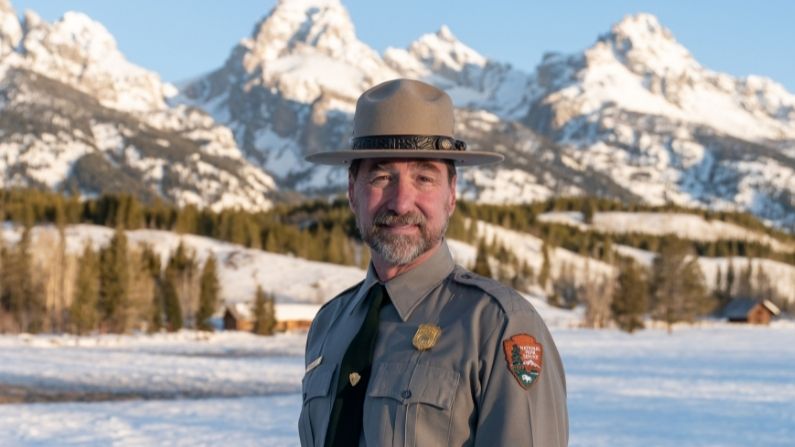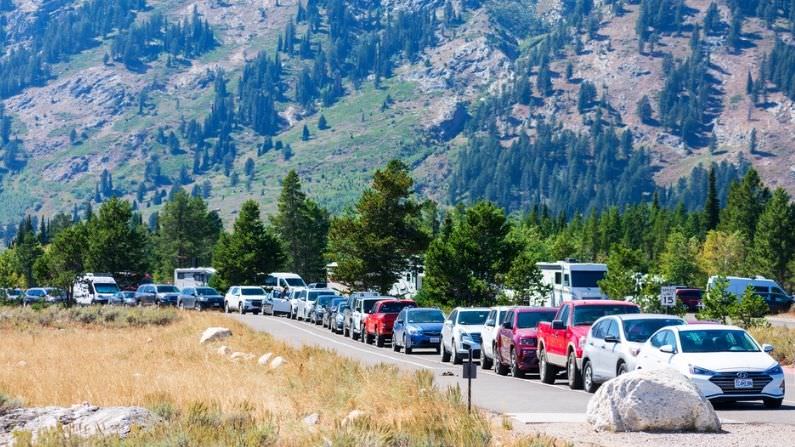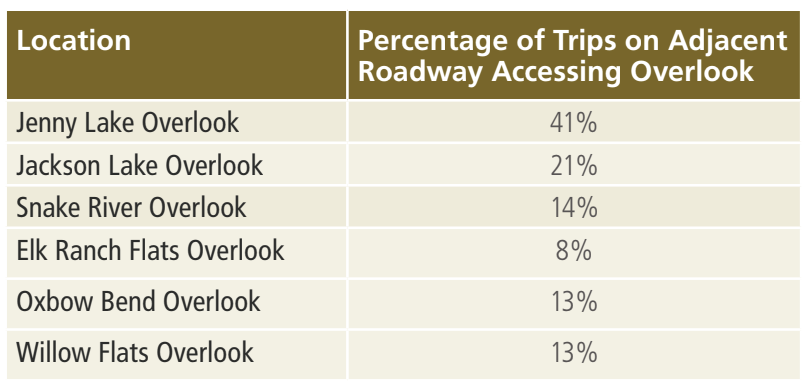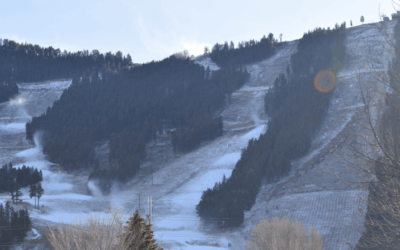Most visitors who come to Grand Teton National Park don’t just beeline to the visitor center. They don’t all head to Taggart Lake Trailhead either. In fact, the majority doesn’t go straight to any specific destination.
Instead, a new study found that visitors stop at overlooks and a variety of trailheads throughout the park, snapping photos along the way.
Grand Teton Superintendent Chip Jenkins said the mobility study — conducted to address high visitation numbers which have stressed park resources — didn’t reveal any dominant travel patterns for visitors.
“They are immersed in their experience through the park through their windshield from the moment that they start to see the Tetons,” Jenkins said in a Tuesday press conference. “And they respond by stopping and taking in that scenery.”
Potential shuttles
Most people are exploring the Tetons from their own car, since the park doesn’t have any kind of bus service.
Climate activists and community members have urged the park to offer shuttle services, like Zion National Park and Glacier National Park, but any changes may be a long way off.
Jenkins said the park is interested in working with the local transit district, though it’s unlikely they’ll ever restrict access to cars.
“People like having the autonomy,” Jenkins said. “Driving in their private vehicle affords them that opportunity to continue this kind of visitor experience.”

Jenkins took over as Grand Teton National Park superintendent in early 2021. (National Park Service)
Parking changes
The park could also take steps to limit parking spaces, in order to keep the trails from getting overcrowded.
At trailheads — including Jenny Lake, Lupine Meadows, Granite Canyon, Death Canyon and Taggart Lake — “demand for parking exceeds available parking spaces,” Jenkins said, with cars spilling out to the sides of the road.
In the future, the park could prohibit cars from parking on the edge of the road, like it does at the String Lake Trailhead.
This comes as visitors increasingly take to the trails, instead of just exploring the park behind their windshields. 2022 saw an over 30% increase in trail use compared to 2014.
“In many respects, that’s a positive thing,” Jenkins said. “It also has some people worried.”
Visitor numbers
According to officials, 2021 was the busiest year on record, with over 3.8 million people flocking to the park.
The recent study says, “Changes in visitation are stressing park operations and infrastructure, park fundamental resources and values, and visitor experiences.”
That said, visitation was down in the national park last summer: New numbers from the National Park Service show Grand Teton had about a million fewer visitors in 2022 compared to 2021 — a decline of about 20%.
That could be because 2021 was an outlier, as more people took to the outdoors in the second year of the pandemic. The drop in 2022 could also be related to the floods in nearby Yellowstone National Park, which also saw fewer visitors last summer.
Jenkins said, regardless, the park is still prepping for numbers to rise in coming years.
“We are thinking about planning, not so much for 2023, as we are planning for 2033 and 2043,” Jenkins said. “I think it’s a reasonable bet … we’re liking to see visitation grow by 2033 and 2043. And so we are thinking about what it is that we need to be doing in terms of planning for that.”
The park will release another study on the diversity and socioeconomic conditions of visitors as early as this spring.







